A deposit weighing a total of seven kilograms, containing hundreds of gold coins and precious metal objects, was found on the southwestern slope of Zvičina Hill in East Bohemia. The find dates back to early February 2025 and occurred during a tourist walk taken by two amateur prospectors who immediately reported the find and handed over the entire material to the Muzeum východních Čech Hradec Králové (East Bohemian Museum).
The site of the find was near the edge of a field, in a spot where an artificially constructed stone wall partially concealed the contents. Inside two separate metal containers, one of which was partially visible above the surface of the ground, were objects of considerable value and in excellent condition. The first container found, an aluminum canister surfaced from the ground near the base of a tree, held a total of 598 gold coins. The coins, carefully arranged in 11 columns and wrapped in black cloth, were stored in a way that provided some protection against moisture and oxidation. In contrast, the second container, a metal box found about a meter away from the first, held several non-monetary objects made of yellow metal. Specifically, 16 tobacco pouches, 10 bracelets, a small fine mesh bag, a comb, a key chain, and an unspecified amount of powder were catalogued.
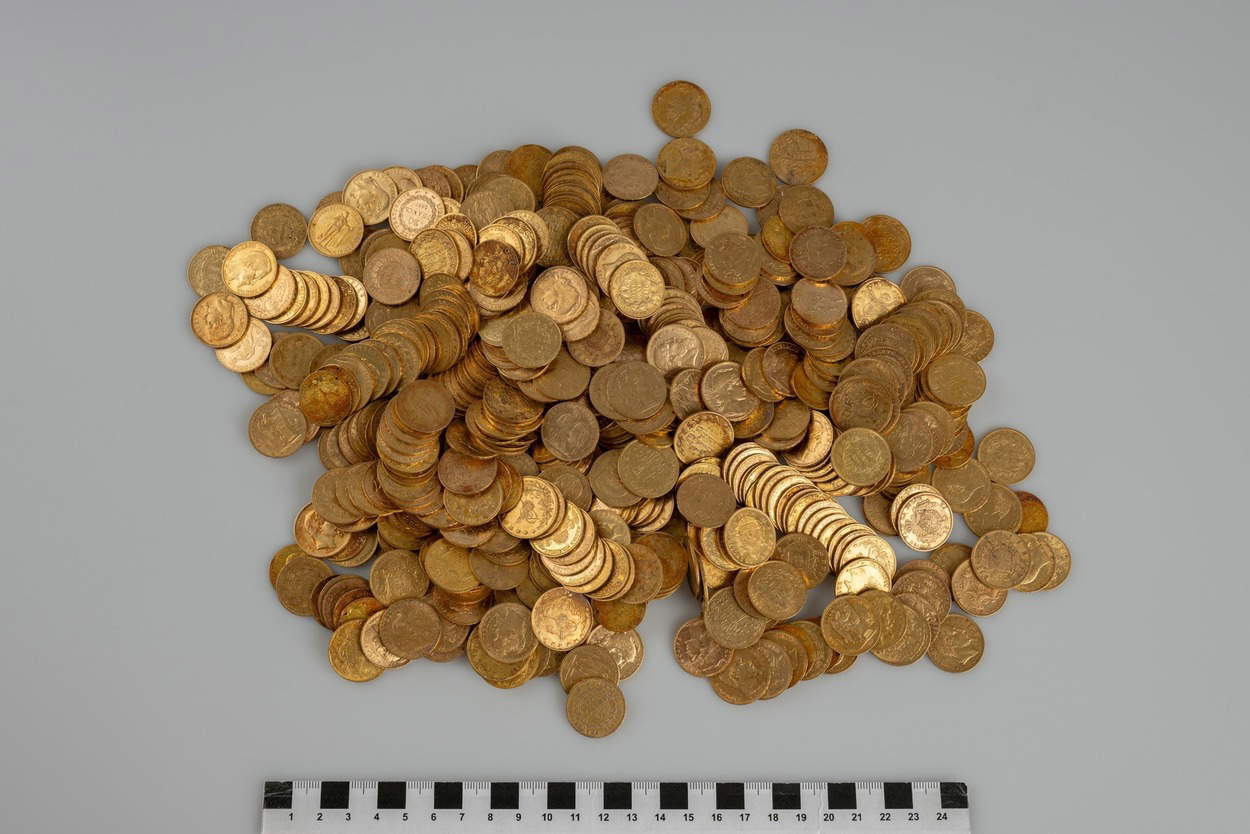
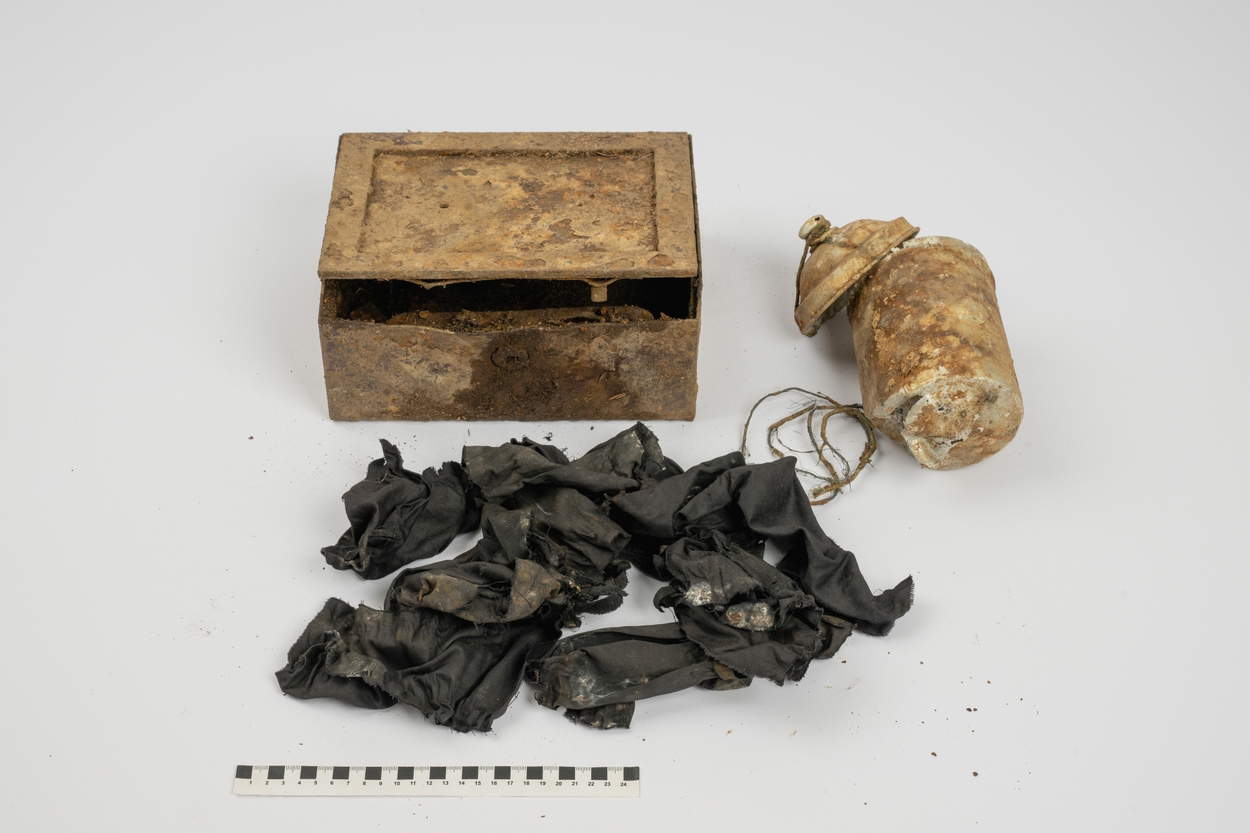
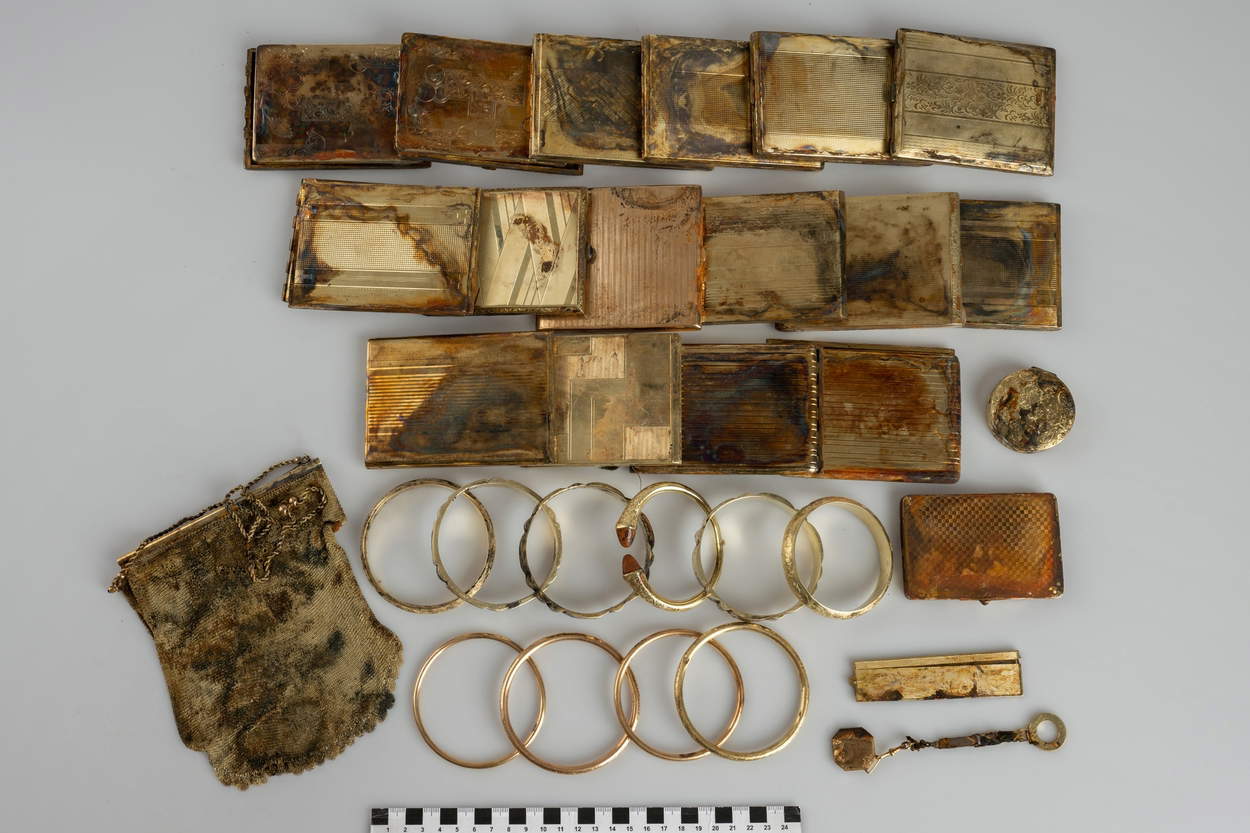
The inventory is currently undergoing in-depth analysis to determine the exact composition of the materials, particularly the non-monetary ones. Indeed, this is not a deposit that can be traced back to prehistoric or ancient times, as is often the case in such circumstances. The relatively recent age of the materials found presents scholars with broader possibilities for further investigation, especially through consultation of available archival documents and historical sources. However, this also entails a more complex methodological approach than the usual blurred contours that characterize burials or caches from more remote eras. According to Vojtěch Brádle, a numismatist at the East Bohemian Museum, the set of coins cannot be interpreted as simply a fund of monetary circulation from a particular period. Rather, the organization of the deposit and the context of the find suggest that it is a real treasure trove of precious metal, probably concealed under circumstances yet to be clarified.
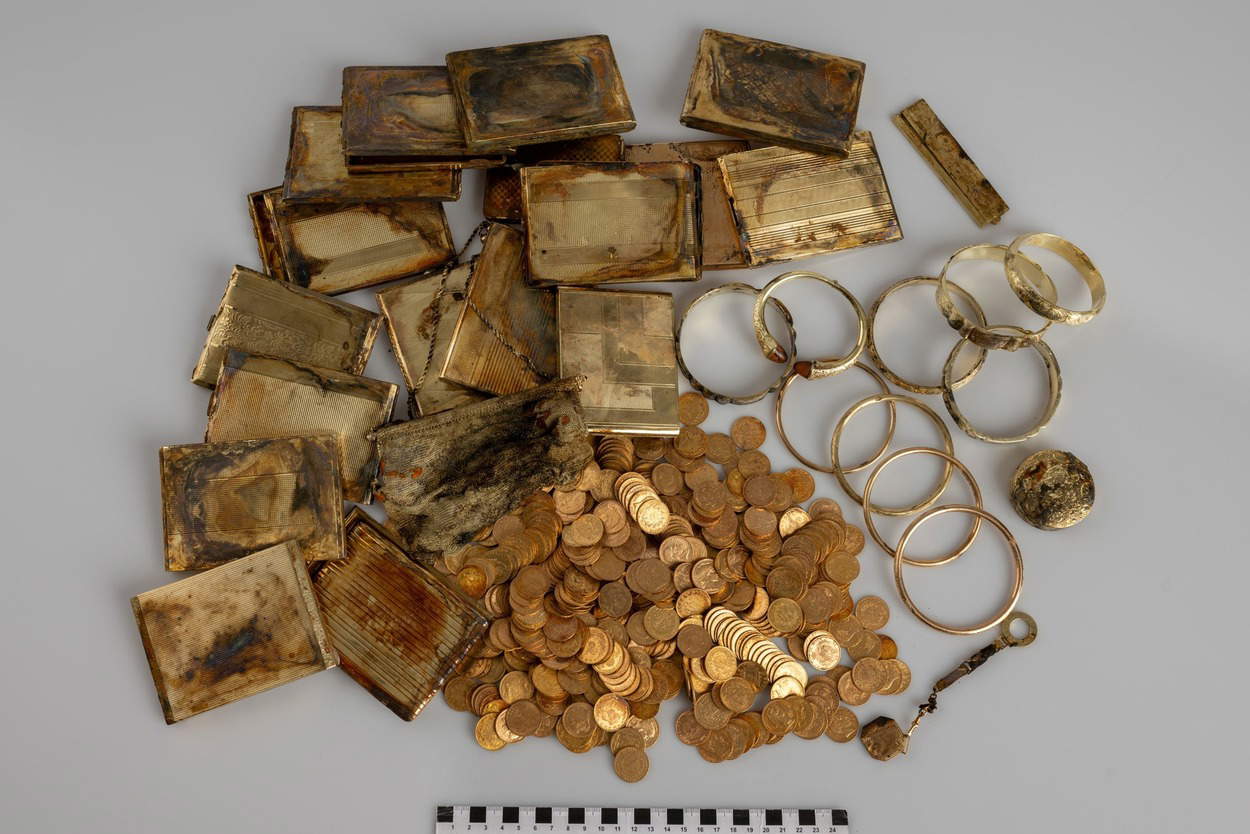
“The treasure was hidden underground for a little over a hundred years at most,” Brádle claims. “According to the minting dates, it contains coins from 1808 to 1915. In this particular case, however, the year 1915 is not decisive in determining when the deposit was located. The reason is the presence of several pieces with miniature marks (so-called countermarks), which could only have been provided after World War I. The coins were minted in the territory of the former Yugoslavia during the 1920s and 1930s. Overall, it can be said that, in the context of national finds, this is a very specific set in terms of composition, as most of it consists of coins of French origin and, in addition to coinage from the Austro-Hungarian Empire, also includes Belgian or Ottoman coins in larger quantities. In contrast, German and Czechoslovakian coins are completely missing.”
“Storing valuables underground in the form of treasures, so-called deposits, has been a common practice since prehistoric times,” says Miroslav Novák, head of the Archaeological Department of the East Bohemian Králové Museum in Hradec. “In the beginning, religious motifs were more common, but later it was more often goods stored at uncertain times with the intention of taking them back later. This discovery is remarkable especially because of the unusually high weight of the precious metal.”
The hypothesis, preliminary for now, is that the deposit was intentionally hidden for conservation or defensive purposes, in a historical and social context yet to be defined. The orderly presence of the coins, wrapped in protective fabrics and arranged with extreme care, seems to reinforce the idea of a purposeful collection, not intended for immediate use, but preserved for security reasons. As for the non-monetary objects, the Puncov office is currently in charge of metallurgical analysis and the precise determination of the alloys used. These examinations play a central role in determining the conservation treatment protocols that will be adopted.
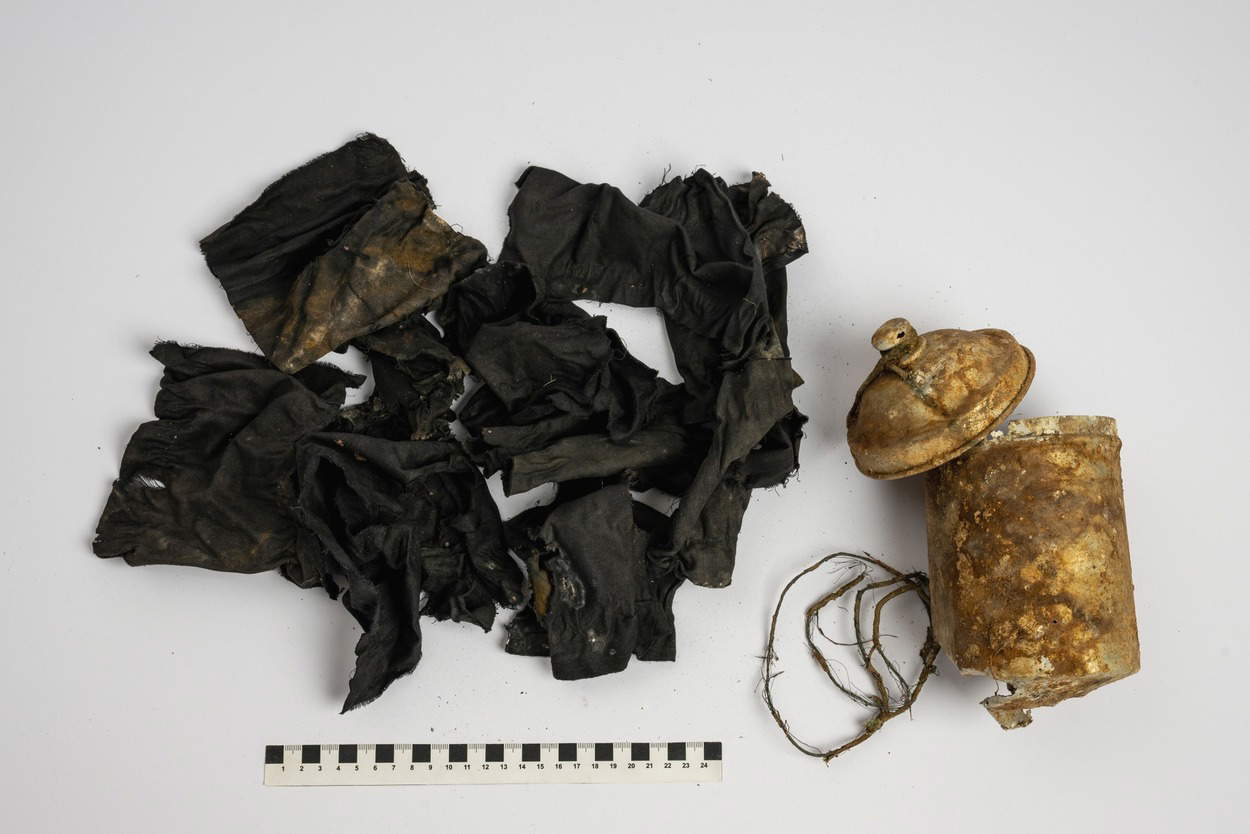
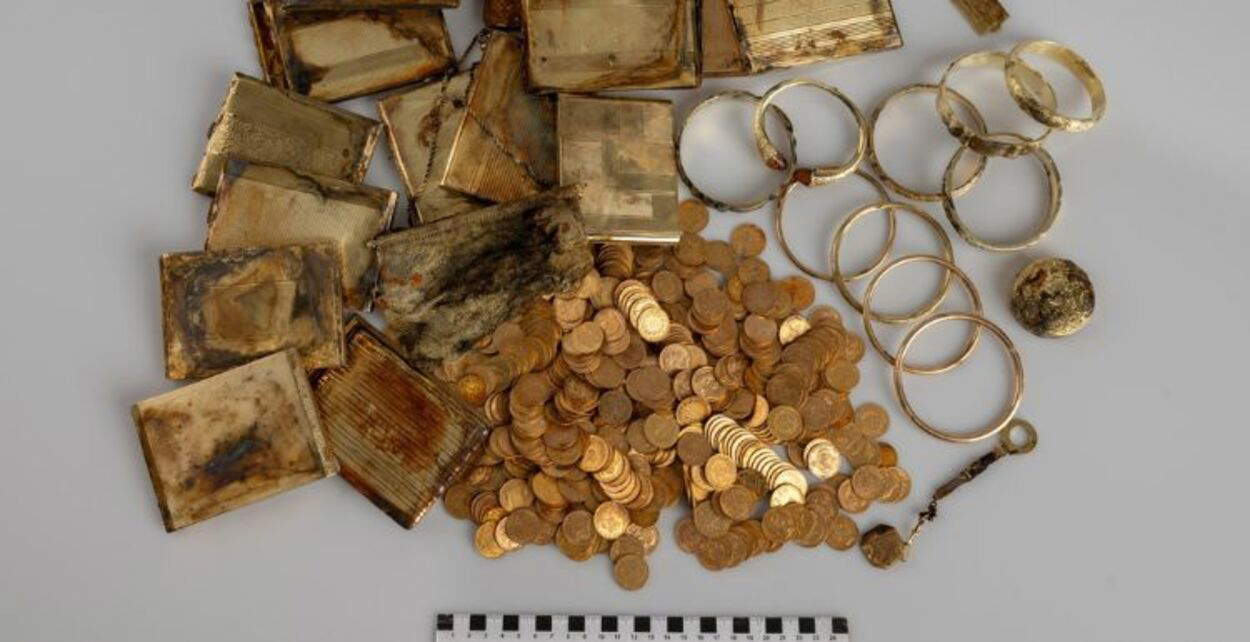 |
| Bohemia, 7 kg deposit found with gold coins and jewelry on hillside |
Warning: the translation into English of the original Italian article was created using automatic tools. We undertake to review all articles, but we do not guarantee the total absence of inaccuracies in the translation due to the program. You can find the original by clicking on the ITA button. If you find any mistake,please contact us.